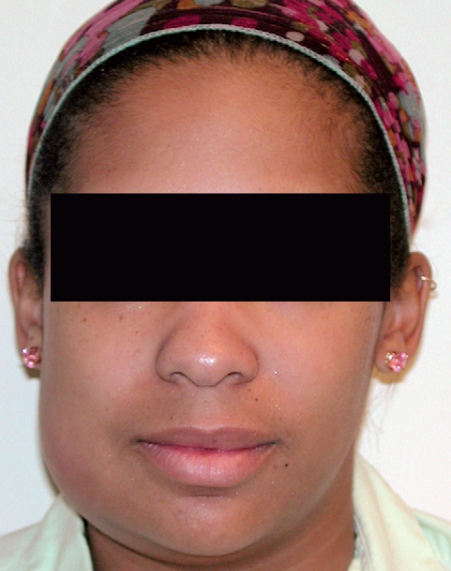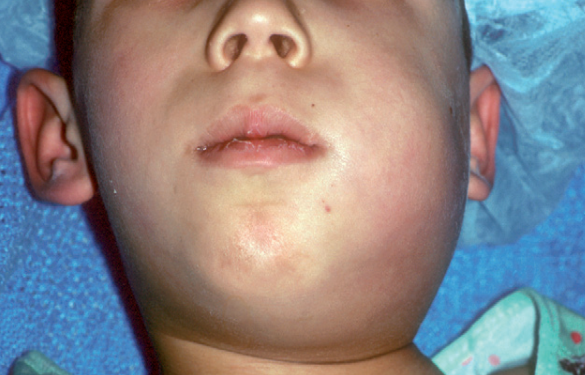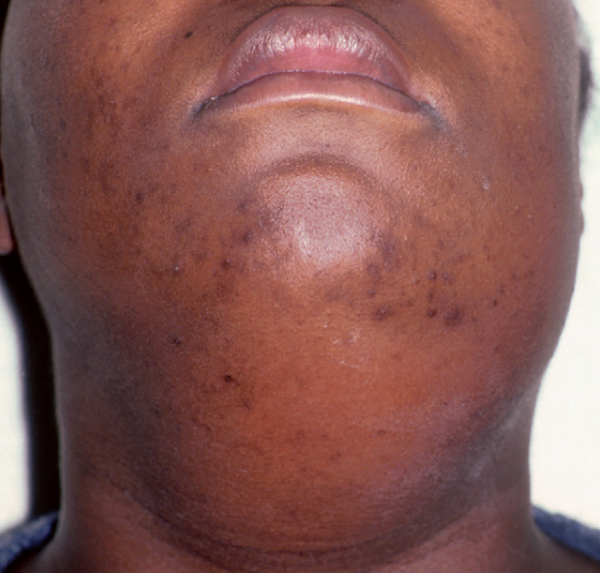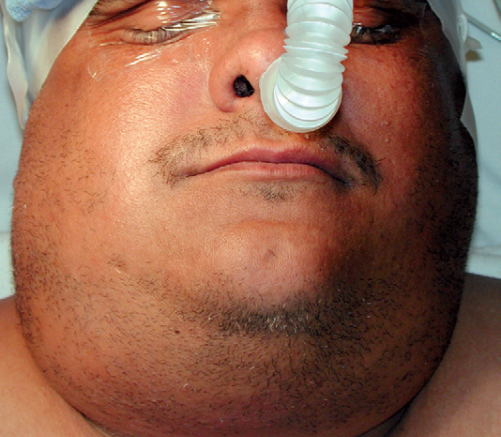Maxillofacial space infection
OVERVIEW
Which areas of the human body does the maxillofacial region refer to?
In medical terms, the maxillofacial region mainly refers to the area below the hairline, above the neck, and anterior to the tragus of the ear, excluding the eyes and nose.
What is the maxillofacial space?
The maxillofacial space refers to the potential cavities between bones, muscles, fascia, skin, and other tissues in the maxillofacial region. These cavities are filled with fat, lymph nodes, blood vessels, nerves, and other tissues.
Just like a padded coat, where the inner and outer layers of fabric form a cavity filled with cotton padding, the fat, lymph nodes, blood vessels, and nerves in the maxillofacial space are analogous to the cotton padding. These tissues are loosely structured and are medically referred to as loose connective tissue or cellular tissue. There are about ten such interconnected potential spaces in the maxillofacial region.
What is maxillofacial space infection?
Maxillofacial space infection refers to acute suppurative inflammation in the maxillofacial spaces caused by various factors, often due to pathogenic bacteria and sometimes combined with fungal infections. Symptoms mainly include redness, swelling, heat, pain, and functional impairment (e.g., difficulty opening the mouth or eyes, hindering speech and swallowing).
Treatment primarily involves antibiotic therapy. If an abscess forms, surgical incision and drainage are required to control the inflammation. Untreated or improperly managed infections may spread, leading to sepsis, septic shock, or even life-threatening conditions. While isolation is unnecessary, the inflammation can severely impact the patient's quality of life.
Is maxillofacial space infection common?
Generally, maxillofacial space infections are not very common. They occur more frequently in regions with poor medical conditions than in developed areas. In recent years, due to antibiotic misuse and resistance, such infections have shown an increasing trend.
What are the common types of maxillofacial space infections?
Based on the infected space, the following types exist:
Infraorbital space infection: The area above the corner of the mouth, beside the nose, and below the lower eyelid.

Buccal space infection: The outer side of the corner of the mouth.
Temporal space infection: The subcutaneous area above and behind the temple on one side.
Infratemporal space infection: Located deep below the earlobe, not easily visible on the face or neck.
Masseteric space infection: Around the mandibular angle (below the earlobe, near the right-angled corner of the mandible).

Pterygomandibular space infection: Located deep, not easily visible on the face or neck.
Sublingual space infection: Below the tongue, in the horseshoe-shaped area formed by the mandible.
Parapharyngeal space infection: Located deep, may cause swelling on the face or neck, but swelling around the soft palate is usually visible when opening the mouth.

Submandibular space infection: Below the lower border of the mandible (the hard bony ridge under the chin).

Submental space infection: Below the tip of the chin.

Floor of mouth space infection: Occurs when infection involves the sublingual, submental, and submandibular spaces.

Infections may occur in a single space or spread to multiple interconnected or adjacent spaces. Generally, the more spaces involved, the more severe the inflammation and symptoms, increasing treatment difficulty and risks.
SYMPTOMS
What are the common manifestations of maxillofacial space infection?
Similar to infections in other parts of the body, the skin in the inflamed area becomes red, and we may feel swelling. The infected area is warmer to the touch than normal, with noticeable pain. Symptoms may include difficulty opening the mouth wide, inability to open the eyes fully, and pain when swallowing. As the inflammation worsens, systemic symptoms such as fever, chills, fatigue, and lethargy may occur. In severe cases, life-threatening conditions like coma or shock may develop.
What are the manifestations of mild maxillofacial space infection?
When the infection is mild and the inflammation is localized, the skin in the affected area becomes red, with sensations of swelling and pain. For superficial infections, such as infraorbital space infection, the lower eyelid and the lower half of the face may swell, accompanied by spontaneous pain or tenderness upon touch. Deeper infections, such as those in the parapharyngeal or temporomandibular spaces, often cause throat pain or pain when opening the mouth. Typically, only localized symptoms are present, without systemic symptoms like chills, fever, or lethargy.
What are the manifestations of moderate maxillofacial space infection?
When the infection is more severe and the inflammation spreads, symptoms like skin redness and swelling become more pronounced. Additional symptoms may include difficulty swallowing, limited mouth opening, swollen eyelids, and difficulty opening the eyes fully. Some patients may also experience systemic symptoms such as fever, fatigue, loss of appetite, and lethargy.
What are the manifestations of severe maxillofacial space infection?
When the infection involves multiple spaces or the body's immune response is weak, severe infections often occur. Swelling may extend from the ear area to the face, neck, or even the chest and cranial cavity in rare cases. Systemic symptoms are prominent, potentially leading to difficulty breathing, inability to swallow, or even coma and shock.
Where does maxillofacial space infection commonly occur?
The most frequently affected spaces in the maxillofacial region include the infraorbital space, masseteric space, and buccal space.
How does maxillofacial space infection progress?
- Most maxillofacial space infections result from untreated dental diseases, such as cavities, periodontal disease, or pericoronitis of wisdom teeth. The infection spreads from the dental pulp (the central cavity of the tooth) or periodontal tissues to the jawbone, then to surrounding spaces like the infraorbital or masseteric spaces. As the condition worsens, the infection may spread to adjacent spaces, exacerbating the inflammation.
- A small number of cases may arise from infections like colds, tonsillitis, or lymphadenitis, which then spread to maxillofacial spaces and neighboring areas.
- Rarely, infections may be caused by medical procedures such as punctures, injections, or surgeries that introduce pathogens directly into the maxillofacial spaces.
What complications can maxillofacial space infection cause?
Infection spread: The most common complication, where the infection may spread to adjacent spaces, the cranial cavity (causing intracranial infection), or downward to the chest and mediastinum (forming mediastinal abscesses). It may also lead to sepsis or septic shock via bloodstream dissemination.

Osteomyelitis: If abscesses around the jawbone are not treated promptly or thoroughly, osteomyelitis of the jaw may develop, complicating treatment.
Difficulty breathing or suffocation: Infections in spaces like the parapharyngeal or pterygomandibular spaces may cause swelling that narrows or blocks the throat, leading to breathing difficulties or suffocation.
CAUSES
What are the common causes of maxillofacial space infections?
- The most common causes are dental caries, periodontal disease, or pericoronitis of wisdom teeth in the oral cavity;
- A small portion result from the spread of infections such as colds, tonsillitis, or lymphadenitis to the maxillofacial space;
- A very small number are caused by medical procedures like surgery or punctures directly introducing bacteria into the maxillofacial space.
Who is most susceptible to maxillofacial space infections?
- Individuals with poor oral hygiene
- Those who delay treatment for dental caries
- People suffering from periodontal disease
- Individuals with weakened immune systems
- Those with systemic diseases such as diabetes or malignant tumors
Are maxillofacial space infections contagious?
Maxillofacial space infections are not classified as contagious diseases. However, hands should be washed promptly after contact with pus or secretions from patients who have undergone incision and drainage. Extra caution is needed if the patient has antibiotic-resistant infections.
DIAGNOSIS
How is maxillofacial space infection diagnosed?
- Patients usually experience toothache or conditions like colds, tonsillitis, or lymphadenitis before onset.
- For superficial space infections (e.g., infraorbital, masseteric, or submental spaces), doctors can visually assess swelling extent, skin color, and palpate to evaluate texture, skin temperature, or abscess formation. Examining oral teeth and periodontal conditions helps identify the infected tooth, confirming the presence and location of space infections.
- Deeper space infections (e.g., parapharyngeal, pterygomandibular, or temporomandibular spaces) may show no obvious facial or neck swelling but often cause significant dysfunction, such as limited mouth opening or pain during swallowing. Imaging tools like ultrasound, CT, or MRI may be used to confirm infection and abscess formation.
What tests are needed for maxillofacial space infection?
Common tests include:
Panoramic radiography or CBCT (dental CT): Identifies the infected tooth and determines osteomyelitis extent if present.
Ultrasound: Detects pus formation, abscess range, and proximity to critical structures (e.g., blood vessels), guiding surgical incision or puncture procedures.
CT: Evaluates infection scope, abscess presence/location, and spatial relationships with vital structures in deep-space infections. Also assesses mediastinal involvement if infection spreads.
What diseases can maxillofacial space infection be confused with? How to differentiate?
Facial boils/carbuncles: Initially appear as small red dots with central yellow pustules (indicating pus). Unlike space infections, these lesions are smaller, rupture naturally to drain pus, and lack diffuse swelling. Characteristic red/yellow spots distinguish them.
Infected sebaceous cysts: Pre-infection, cysts feel like pea-sized subcutaneous lumps. Infection causes enlargement and eventual rupture. Imaging shows well-defined pus pockets with cyst walls, unlike space infections.
Deep-space tumors with infection: Tumors (especially malignancies) in areas like the parapharyngeal or infratemporal spaces may mimic infection symptoms (e.g., swallowing difficulty, trismus). CT/MRI or biopsies (avoided if malignancy is suspected) help differentiate.
TREATMENT
Which department should I visit for maxillofacial space infection?
For maxillofacial space infection, you should visit the oral and maxillofacial surgery department of a specialized dental hospital, or the stomatology or ENT department of a general hospital. If the infection spreads to the brain or thoracic cavity, it may require the involvement of departments such as neurosurgery and thoracic surgery for collaborative treatment.
Can maxillofacial space infection heal on its own?
Maxillofacial space infection is not self-limiting and will not heal on its own. However, if the patient is physically strong, has good resistance, and the infection is mild with a small affected area, the treatment difficulty is lower, and the patient's discomfort will be relatively less severe.
How is maxillofacial space infection treated?
The main treatment methods for maxillofacial space infection include medication and surgery.
- Medication: Before pus formation, treatment primarily involves medication, mainly antibiotics. If the patient has a fever or significantly reduced food and water intake, appropriate supplementation of salt, water, sugar, protein, vitamins, and other nutrients may be necessary.
If other diseases are present, corresponding treatments are required. For example, diabetic patients need timely and proper medication to control blood sugar. During chemotherapy for malignant tumors, consultation with an oncologist is needed to stop chemotherapy if the condition allows. - Surgery: If pus formation is confirmed through palpation, ultrasound, CT, or puncture examination, surgical incision is required to drain the pus, followed by irrigation and dressing changes.
- Tooth treatment: After the inflammation is controlled, promptly extract or treat the decayed tooth causing the infection.
Is hospitalization required for maxillofacial space infection?
- For superficial and mild infections such as infraorbital or buccal space infections, oral antibiotics or outpatient intravenous therapy at a community health center may suffice if the patient is generally healthy.
- Hospitalization is required if the infection involves multiple spaces, is deep-seated, or if the patient is elderly (over 50 years old) with systemic diseases such as diabetes, heart disease, or hypertension. Hospital treatment involves dynamic monitoring of blood sugar, blood pressure, blood tests, etc., and corresponding measures for potential severe complications like asphyxia or septic shock.
What are the common side effects of medications for maxillofacial space infection?
Medications for maxillofacial space infection are primarily antibiotics, with the most common side effects being diarrhea, bloating, abdominal pain, rashes, and skin itching. These symptoms usually disappear after stopping the medication and do not require special treatment. It should be noted that allergic shock may occur at the beginning of medication, although the possibility is very small. Prompt and proper handling is essential, as it can be life-threatening.
What are the common risks of surgical treatment for maxillofacial space infection?
- Scarring: Generally, abscess incisions for maxillofacial space infections are made inside the oral cavity, such as for infraorbital, masseteric, or buccal space infections. However, for spaces like the temporal, pterygomandibular, or submandibular spaces, if intraoral incisions cannot reach the abscess or fully drain the pus, external incisions on the face or neck may be necessary, leaving scars. Doctors usually choose concealed locations (e.g., scalp above the temple for temporal space, below the mandibular angle for pterygomandibular space) to minimize aesthetic impact.
- Nerve and blood vessel damage: Important nerves and blood vessels are often distributed in maxillofacial spaces. During surgery, these may be cut or damaged.
Nerve damage can cause corresponding symptoms. For example, during submandibular space incision, branches of the facial nerve may be cut, leading to crooked lips or asymmetry when smiling. Infraorbital nerve damage may cause numbness in the lower eyelid area.
If the nerve is not completely severed but damaged by compression or friction during surgery, most symptoms can recover (recovery may take months, up to 2–3 years). If the nerve is completely severed, recovery is unlikely. Blood vessel damage may cause persistent bleeding, which can be stopped by ligating the vessel without long-term consequences. - Sialocele and obstructive sialadenitis: Sialocele occurs when saliva flows into the infected space or out of the incision instead of through normal ducts. This can happen during abscess drainage in the buccal space (parotid duct), sublingual space (sublingual and submandibular ducts), or submandibular space (submandibular gland). Damage to salivary glands or ducts may cause rupture, stenosis, or obstruction, leading to sialocele or obstructive sialadenitis.
Sialocele usually resolves with pressure dressing after inflammation subsides. Obstructive sialadenitis may require duct redirection or gland removal after infection control.
How long is the recovery period after surgical treatment for maxillofacial space infection?
- For single-space infections with a small and mild affected area, full recovery usually takes 7–10 days.
- For larger infections requiring surgical drainage, full recovery typically takes 1–2 weeks post-surgery.
- If the infection spreads to the cranial or thoracic cavity, or if complications like sialocele occur, recovery may take 1–2 months.
- If nerve damage occurs, nerve function recovery may take up to 2–3 years.
Can maxillofacial space infection be completely cured?
Maxillofacial space infection can be completely cured, provided that decayed teeth are treated promptly, and the patient maintains good physical health to enhance disease resistance.
DIET & LIFESTYLE
What should patients with maxillofacial space infection pay attention to in their diet?
- Consume a balanced liquid diet, such as noodle soup, rice porridge, vegetable soup, meat porridge, milk, etc.
- Avoid large or hard solid foods, such as nuts, crackers, etc.
- Due to pain or difficulty opening the mouth, food intake may decrease, but ensure adequate hydration and salt intake by drinking more water or lightly salted/sugar-salt solutions.
What should patients with maxillofacial space infection pay attention to in daily life?
- In the early stages, apply an ice pack to the swollen area to relieve pain and reduce swelling.
- During recovery after infection control, use warm compresses to promote inflammation absorption.
- Rinse the mouth after each meal to remove food debris.
What are the precautions after surgical treatment for maxillofacial space infection? How to care for the wound post-surgery?
- If there are surgical incisions or rubber drains (used to drain pus and fixed with sutures), avoid dislodging them while eating or rinsing. If a drain falls out and mixes with food, spit it out immediately, note its number and length, and inform the doctor or nurse. Be cautious when speaking or inhaling to prevent accidental aspiration, which may cause choking or lung infection.
- Keep facial and neck dressings dry and clean. If soaked with pus or blood, notify the medical staff promptly.
Is follow-up necessary for maxillofacial space infection? How is it conducted?
Follow-up is required:
- If nerve damage occurs post-surgery, take neurotrophic medications as advised and attend follow-ups to assess nerve recovery.
- If salivary fistula develops, follow the doctor’s instructions for pressure dressing, avoid acidic or irritating foods, and return for wound checks and dressing changes.
- For obstructive sialadenitis, comply with follow-ups to evaluate whether duct diversion or gland removal is needed.
Are there other lifestyle precautions for maxillofacial space infection?
- Ensure sufficient sleep and quality rest. If pain disrupts sleep, consult the doctor for short-term pain relief or sleep aids.
- Practice self-regulation and maintain a positive mindset to support recovery confidence.
PREVENTION
Can maxillofacial space infections be prevented?
- Maxillofacial space infections can be prevented by addressing the factors that cause them.
- Promptly treat decayed teeth and other oral diseases: such as cavities, wisdom teeth, periodontal disease, etc., and address these potential sources of infection in a timely manner.
- Pay attention to and promptly treat lymphadenitis, tonsillitis, etc.
- Engage in regular physical exercise to boost immunity and disease resistance.
- Seek treatment for oral diseases at reputable hospitals and clinics.
- Special cases such as diabetes or chemotherapy patients should prioritize oral examinations and treatment of oral diseases.
How to prevent recurrence of maxillofacial space infections?
- After controlling the infection, promptly address the decayed teeth or other oral diseases that caused it: treat cavities, wisdom teeth, periodontal disease, residual roots, etc., to eliminate infection triggers.
How can patients with maxillofacial space infections prevent complications?
- During treatment, follow medical advice, control diet, increase mouth rinsing, and cooperate with wound dressing and irrigation to help control the infection and reduce complications like infection spread.